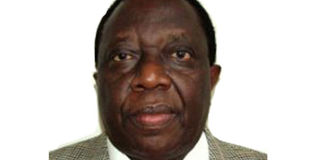Revival of Uganda Airlines: Hard lessons government must learn

William G Naggaga
What you need to know:
- Stiff competition. A national carrier must be run strictly according to the book and the choice of personnel must be based on competence, not tribal or regional affiliations. We have seen many parastatal entities go under because of poor selection of staff and managers, most of whom were totally useless. Uganda Airlines will be entering the skies, which are already crowded and where competition is stiff. It has to style-up and adopt modern management techniques.
I must confess that when the idea of reviving Uganda Airlines was mooted, I was sceptical of its becoming a reality and wrote an article in the Daily Monitor to that effect. I believed then that it was foolhardy to re-start an airline, which the government had ‘cremated’ over a decade ago and its ashes dumped in nearby Lake Victoria, because it was a loss making enterprise and a drain on the public purse. Not everything was dumped though.
The lucrative cargo handling business was handed over to ENHAS, a private company quickly registered for the purpose. My reasoning then was that the NRM government had an appalling record in running public enterprises and little if anything had changed to assume it had developed a genuine interest and capacity to run a public enterprise successfully; not to mention the inevitable corruption and nepotism that would creep into the new Uganda Airlines once it started flying. I also believed that the government had ‘imbibed’ too much of the World Bank doctrine that, “government should not be involved in business”, which is better left to the private sector.
Uganda Airlines has now been revived following government’s decision to purchase six assorted aircrafts (on loan), including American Boeings and Canadian Bombardiers for medium and short-range flights. It, of course, takes much more than purchase of planes to run a successful airline business; one of the trickiest businesses.
In 1977, I visited the Gambia to attend an OAU meeting chaired by Sir Dauda Kairaba Jawara, the amiable first president of the Gambia. I noticed at Banjul International Airport the sign ‘Air Gambia’, but didn’t see any Air Gambia planes taking off or landing. I saw British Airways, Senegal Air, chartered flights ferrying in tourist, etc.
I later learnt that Air Gambia did not have any planes then, but was making profit from landing fees, cargo handling and leasing out its assigned routes to other carriers! Decades later, Gambia caught the ‘bug’ of owning a carrier out of national pride. I understand the airline went from being a profitable business to a loss making operation.
There are other small countries in Africa that went through a similar experience. Now that Uganda has opted to plunge into the deep end, it must as a matter of urgency, reclaim the cargo handling services, which was an integral part of the old Uganda Airlines from the present private ownership. It would be ridiculous for Uganda Airlines not to reclaim this profitable and strategic operation.
Idi Amin started Uganda Airlines in 1977 after the breakup of the East African Community and the appropriation of the assets belonging to East African Airways by Kenya, which incorporated them into the new Kenya Airways. Amin quickly purchased a couple of used Boeing 707, a C130 cargo plane and a good number of short range planes.
As president of a land-locked country, Amin saw the dangers ahead should things go wrong with Kenya. Tanzania was already an ‘enemy’.
Uganda Airlines started regular flights to London, Rome and Frankfurt and internal flights within Uganda. Amin started an airline both for national pride and out of necessity and the need for survival. Uganda Airlines continued to serve Uganda until it was dismantled by the current government in the 1990s over a relatively small debt and at a time when it could have easily been turned into a profitable venture.
Now that the government has decided to pick up the pieces and revive Uganda Airlines, there are some hard lessons it must learn. It must define its real mission and objectives and stick by them come rain or shine. Airlines are tricky businesses and there are many carcasses of ‘dead’ airlines the world over to prove this.
A national carrier must be run strictly by the book and the choice of personnel must be based on competence, not tribal or regional affiliations. We have seen many parastatal entities go under because of poor selection of staff and managers, most of whom were totally useless. Uganda Airlines will be entering the skies, which are already crowded and where competition is stiff. It has to style-up and adopt modern management techniques.
It should not be ‘priced out’ by crippling taxes, which URA imposes nearly on anything. The prices of tickets must be competitive to attract travellers.
Government must also be committed to absorbing some losses along the way as the airline will inevitably experience. This is a huge gamble, but if the airline is run prudently, it is possible for it to begin making modest profits in say 10 years time.
Best of luck “Flying Crane’’!
Mr Naggaga is an economist, administrator and
retired ambassador. [email protected]




